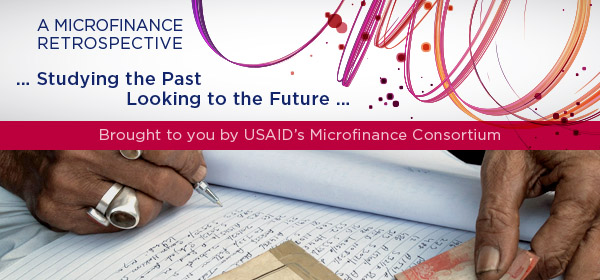Studying the Past, Looking to the Future: Growing a Mighty Oak: The Origins of SEEP

Growing a Mighty Oak: The Origins of SEEP
In the early 1980s, a few U.S. NGOs were pioneering new initiatives in the fields of enterprise development and microcredit, and many others were becoming interested in this work. Those early adopters included organizations well known in the field today and others that have long disappeared. They included Accion International, Pact, OEF International, Partnership for Productivity, and Technoserve, among others. Several of these organizations were engaged in a dialogue with the U.S. Agency for International Development (USAID) regarding how best to evaluate these new programs, which envisioned business development as a pathway to economic development and social change and which also focused on local institution building. Somehow, simple return on investment calculations didn’t seem adequate for these evolving initiatives.
When USAID agreed to fund a one-year project to develop an evaluation method that would inform practice in all its dimensions, I was asked to coordinate the effort along with Shirley Buzzard, an expert in evaluation systems. We launched the Small Enterprise Evaluation Project (SEEP). (Micro was not the prevailing modifier in use at the time, nor was the term microfinance.) We also developed a strategy to accomplish the goals of the project using a collaborative method that ultimately took two years and involved 25 NGOs contributing money, time, and energy to the project. At its conclusion, we had a book, but we also had developed a process and an interest in best practice learning that had momentum. We saw value in the network that had emerged as did USAID’s Office of Private and Voluntary Cooperation, which agreed to accept a follow-on proposal to convert the project into what now would be called a community of practice. Thus, the SEEP Network was born and is today approaching its 30th year.
From its beginning, SEEP offered a place where U.S. NGOs and their partners could build their capacity in enterprise development and microfinance. And, USAID’s Office of Private and Voluntary Cooperation offered partnership and financial support for years under its Matching Grant Program to ensure that this was achieved. As it funded SEEP, USAID also funded headquarter and field-based technical assistance staff in many NGOs interested in delivering these services, along with systems development, technology infrastructure, and training that enabled organizations to build expertise. Those staff became their organizations’ representatives to SEEP, and both “gave and got” through their participation.
The model we evolved for SEEP—that of product-focused participatory learning—enabled the Network to disseminate best practices effectively and efficiently across the globe. We produced manuals on institutional development, financial ratio analysis, village banking, and many other themes. We delivered training in the United States, Africa, Asia, and Latin America. SEEP representatives used those materials to deliver training to their own staff and partners over and over again.
Operating under the principle of inclusiveness, the Network also offered a place where issues could be debated and new ideas explored. In earlier years, SEEP provided a home for proponents of training and technical assistance, or what was then called nonfinancial services, even when microcredit held sway. That work ultimately evolved into the market-based enterprise development methodologies implemented today. SEEP created a forum for poverty lending when village banking implementers insisted that the larger conversation wasn’t paying adequate attention to practices to serve the poorest. Many SEEP members consistently championed the importance of impact assessment even when others in the field considered such endeavors costly and less important than focusing on metrics related to scale and institutional self-sufficiency.
The interest in impact measurement led to SEEP’s participation in the AIMS project, through which USAID funded three impact assessments and created practitioner tools that combined market research and client outcomes tracking to develop a clearer understanding of client needs, experiences, and assessment of program services.
Over the years, USAID remained a major supporter of SEEP and its members, who continued to support the Network in cash and in kind. Other funders have joined in partnership to grow program services and extend the reach of its capacity building activities. We learned so much about association building that SEEP became a technical assistance provider on network development to national associations across the industry, and now convenes 64 under its umbrella.
Today, SEEP is a global network of international practitioner organizations dedicated to combating poverty through promoting inclusive markets and financial systems. Its 128 institutional members are active in 170 countries and reach nearly 90 million households. Little did I and our founding steering committee know what would evolve from those early days when all of us could meet around one table, debate our ideas, share learning, and work together on behalf of the enterprising poor to whom we were all committed. I’m sure USAID, our partner, never envisioned it either. From little acorns, mighty oaks grow, and from committed, passionate people a living, thriving vehicle to drive best practice.

